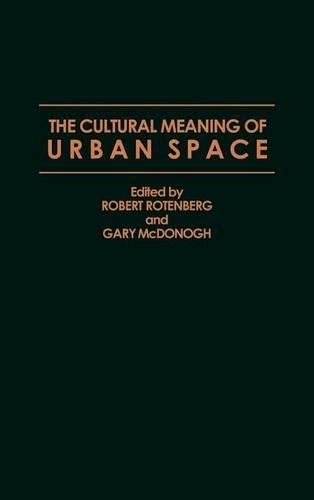
The Cultural Meaning of Urban Space
(Hardback)
Available Formats
Publishing Details
The Cultural Meaning of Urban Space
By (Author) Gary McDonogh
By (author) Robert Rotenberg
Bloomsbury Publishing PLC
Praeger Publishers Inc
20th April 1993
United States
Classifications
Tertiary Education
Non Fiction
City and town planning: architectural aspects
Cultural studies
307.76
Physical Properties
Hardback
248
Width 152mm, Height 229mm
595g
Description
This work presents a cross-cultural approach to the study of urban space. Essays written by major contributors in contemporary urban studies provide a range of case studies from Asia, Latin America, North America, and Europe to address important questions about space and power, processes of change, aesthetics and attitudes toward space, and social divisions expressed through urban life. The essays fall into three interlocking sections: conceptual and linguistic approaches to urban space; visual and social examinations of world cities; and policy examinations of spatial analyses. Together with the jointly compiled bibliography, this collection of essays is designed to stimulate comparative debate and identify new areas for urban research. Essays contrast empty spaces in Barcelona and Savannah, explore the concept of healthy and unhealthy urban environments in classical writings and in modern-day Vienna, and develop a model of space for Shanghai from the point of view of privacy. The subcultural ethos characterising Tokyo and the castle as a symbol for the community in the outdoor spaces in Italy (balcony, street, courtyard), and the school in Honduras are sites for socio-cultural analyses in three more essays. The last group of essays focus on discourses in urban planning, especially the responses of people to the growth, marketing, and decay of residential places. African-American neighbourhoods and waterfront development provide examples for this section. These essays in their theoretical and geographical breadth make significant strides in defining the cultural meaning of urban space. They should be read with interest by city planners, ecologists, and other social scientists involved in finding human solutions to the metropolitan environment.
Reviews
The importance of this volume is not in the recitation of the statistics, facts, figures, or the various case studies, but in the realization of the complexities of urban design for those who construct the urban environment. This book should be used to educate against the creeping intolerance for situations or discourse that do not agree with "our own." It helps to broaden the discourse about what we can do to design contemporary environments that will be flexible and tolerant of differing points of view.-Exploration in Sights and Sounds
These anthropologists have provided a number of important insights on "space and place, ' and have contributed to understanding the physical and social environments. Advanced undergraduate; graduate; faculty; professional.-Choice
"These anthropologists have provided a number of important insights on "space and place, ' and have contributed to understanding the physical and social environments. Advanced undergraduate; graduate; faculty; professional."-Choice
"The importance of this volume is not in the recitation of the statistics, facts, figures, or the various case studies, but in the realization of the complexities of urban design for those who construct the urban environment. This book should be used to educate against the creeping intolerance for situations or discourse that do not agree with "our own." It helps to broaden the discourse about what we can do to design contemporary environments that will be flexible and tolerant of differing points of view."-Exploration in Sights and Sounds
Author Bio
ROBERT ROTENBERG is Associate Professor of Anthropology and Director of the International Studies Program at DePaul University. He has conducted research in Vienna for fifteen years and has done urban analyses of Chicago and Toronto. GARY W. McDONOGH is Visiting Professor and Director of the Growth and Structure of Cities Program at Bryn Mawr. He has done research in Barcelona and Savannah and has published Good Families of Barcelona (1986).
